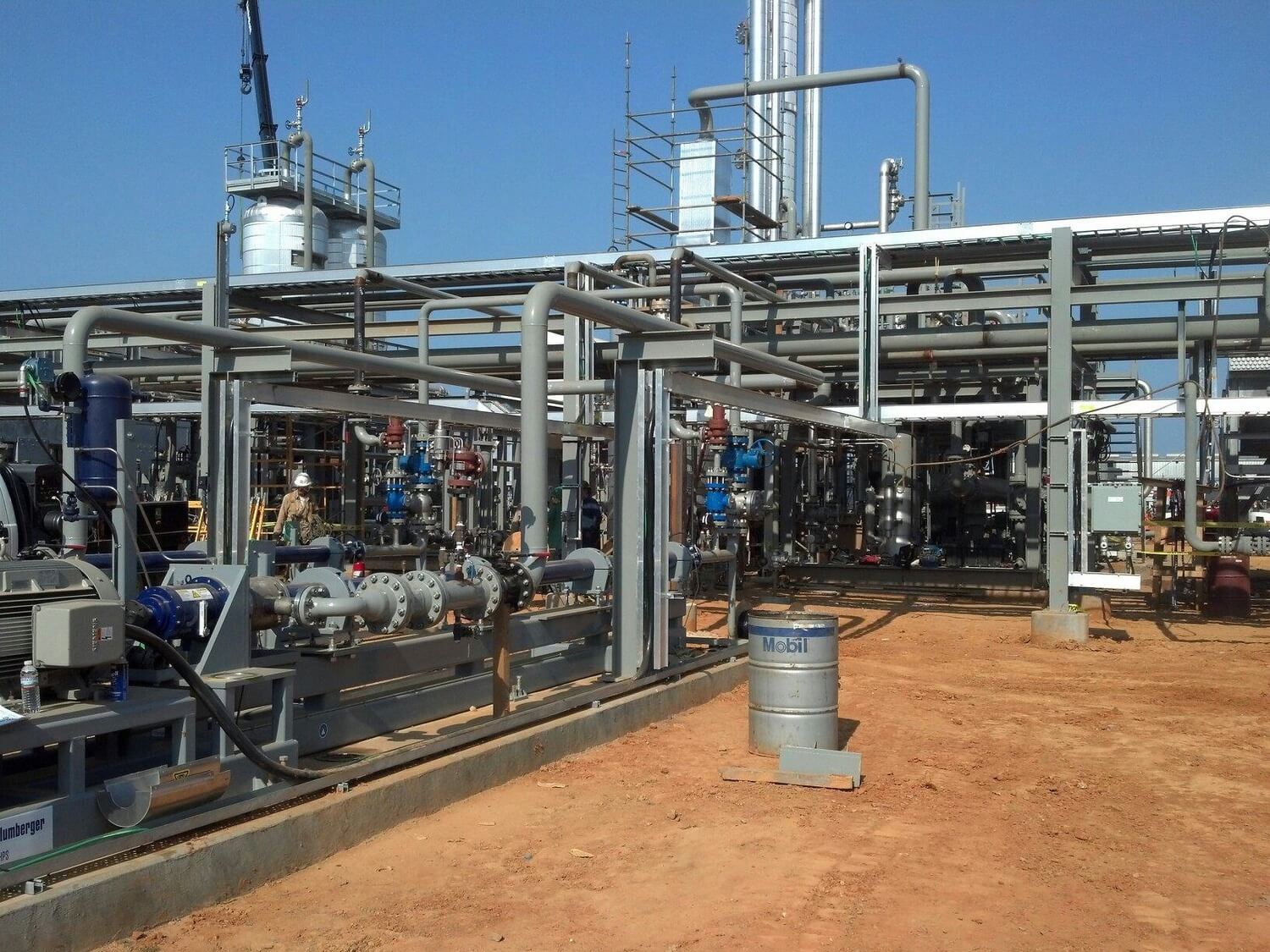What You Never Knew About Natural Gas Processing Plants
Across North America and abroad, natural gas processing plants are part of today’s critical infrastructure. In 2014, there were an estimated 550 natural gas processing facilities across the United States. At Matrix PDM Engineering, we contribute to the numbered growth of natural gas processing facilities in the United States, Canada, Mexico and elsewhere abroad. But what exactly do natural gas processing plants do, and how does processing work? In this article, we’ll address this and highlight some of our own areas of expertise when it comes to the design and construction of natural gas processing plants.
What Do Natural Gas Processing Plants Do?
Let’s start with some basics — in simple terms, natural gas processing plants clean raw natural gas. They achieve this by removing impurities and contaminants. They do this in order to create dry natural gas for pipelines. In addition, natural gas processing plants are critical when it comes to the recovery of natural gas liquids (NGLs) and sulfur.2 There are a good number of misconceptions when it comes to natural gas processing plants, and in the next section, we’ll touch on these and highlight key differences with natural gas.
Natural Gas Processing Plants Facts
Contrary to what some believe, the composition of the natural gas used by consumers is unlike the natural gas that arrives in the wellhead from the ground. In fact, the natural gas utilized by consumers is comprised of methane whereas the natural gas allowed into the pipeline have imposed restrictions. That’s because natural gas requires processing to produce “pipeline quality” dry natural gas, or gas that meets the specifications of the pipeline.3 According to the United States Environmental Protection Agency (EPA), pipeline quality natural gas typically falls somewhere between 95% and 98% methane.4
Producing Pipeline Quality Natural Gas
As you already know, when engineers and others talk about pipeline quality natural gas, they’re talking about natural gas that’s had contaminants, hydrocarbons and other fluids removed. To do this, natural gas requires processing. While some natural gas processing can be performed at or in proximity to the wellhead, only a natural gas processing plant located in a producing area can deliver complete processing solutions. So how does natural gas processing work? Let’s take a closer look.
How Natural Gas Processing Works
As described above, massive transportation pipelines create their own specifications for the make-up of the natural gas entering the pipeline. Processing involves isolating different hydrocarbons, which are known as natural gas liquids (NGLs). The actual processing itself, while often extremely complex in nature, can be simplified into four processes that revolve around contaminant removal:
● Oil and condensate removal
● Water removal
● Separation of natural gas liquids
● Sulfur and carbon dioxide removal 5
But natural gas processing doesn’t stop with these four processes. In addition, natural gas processing requires scrubbers to eliminate sand and larger contaminants, as well as heaters to keep the gas within a specified temperature range. Should natural gas contain even a small amount of water, hydrates (think ice crystals) can form and wreak havoc on the smooth passage of gas through the processing system.
What’s The Deal With NGLs?
In the beginning, we mentioned that natural gas processing plants are also used to recover NGLs. And when we discussed what it takes to produce pipeline quality natural gas, we talked about separating NGLs. At this point, you’ve probably realized NGLs are important by-products of natural gas processing. Whether it’s ethane for plastics, anti-freeze and detergents, propane for heating, butane for motor gasoline, synthetic rubber or lighters; or natural gasoline for the industrial and transportation sectors, NGLs offer a plethora of benefits. Today, NGLs are sold separately and span almost every sector of the economy.
At the point, we have discussed what natural gas processing plants are. We’ve also talked about what it takes to produce pipeline quality natural gas. And we have also addressed how processing works and how NGLs are derived. Now, here are some examples of natural gas processing plant technology and expertise we brought to a recent undertaking.
Red Bluff Natural Gas Processing Plant
The Red Bluff natural gas processing plant is a 200 MMSCFD greenfield project designed to produce purified NGL’s and natural gas for the petrochemical and utility industries. When ISTI Plant Services needed a qualified partner, they turned to us to provide program management, balance of plant (BOP) engineering, process and systems integration, and procurement support for the construction of the facility.
Our BOP services also encompassed foundation design for all equipment and components, civil site design, design for fabrication of all off-skid piping, pipe rack modules and supports, associated pipe stress analysis, electrical and instrumentation engineering for power distribution, grounding and lighting, instrument data sheets and electrical installation details.
In addition, the project team provided master P&IDs, development of a coordinated project schedule, and assistance to ISTI on commissioning and start-up activities.
We also developed specifications for engineered equipment along with procurement, including the feed preheaters, scrubbers, pipeline pumps, flare system, RTO, glycol unit, power distribution center, control system equipment, reverse osmosis water system, balance of plant instrumentation and various storage tanks with pumps.
And that’s how natural gas processing works. Once natural gas is processed, the newly created pipeline quality natural gas is ready for delivery. The gas is subsequently injected into transmission pipelines and transported hundreds of miles to the end users.
Whether you require expertise for natural gas processing plants, sulfur recovery engineering or aboveground storage tank solutions, we can help. With more than 35 years of operational excellence, let our engineering, design and construction services take your project to the next level.
1 https://earthworks.org/issues/gas_processing/
2 https://primis.phmsa.dot.gov/comm/factsheets/fsnaturalgasprocessingplants.htm
3 https://primis.phmsa.dot.gov/comm/factsheets/fsnaturalgasprocessingplants.htm
4 https://www.epa.gov/natural-gas-star-program/overview-oil-and-natural-gas-industry
5 http://naturalgas.org/naturalgas/processing-ng/
